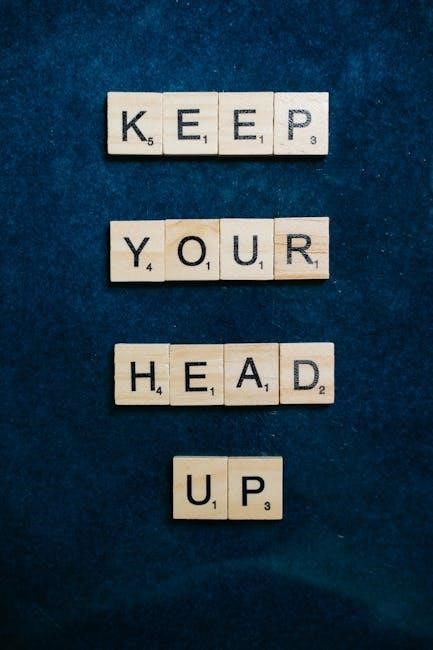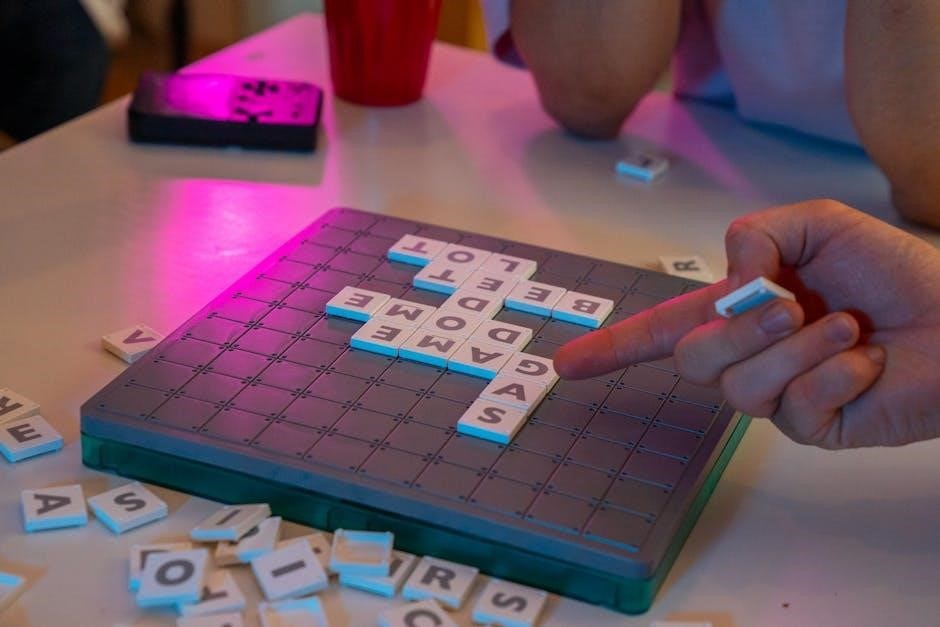Year 3 spelling in Australia focuses on building foundational literacy skills, including high-frequency words, long-vowel sounds, and common sight words, aligned with the national curriculum.
1;1 Definition and Significance
Year 3 spelling words in Australia are specifically designed to enhance students’ literacy skills and vocabulary. These words are selected based on their frequency of use and relevance to daily communication. Spelling is a foundational skill that supports reading, writing, and overall academic success. Mastering these words helps students develop accuracy and confidence in their written work. The Australian curriculum emphasizes spelling as a critical component of language development, ensuring students can express ideas clearly and effectively. By focusing on high-frequency words, long-vowel sounds, and common sight words, the program equips students with the tools to decode and spell complex words. This structured approach aligns with national education standards, fostering a strong literacy foundation for future learning.
1.2 Structure and Scope
The Year 3 spelling words in Australia are organized into structured lists, typically containing over tailored for students in Grade 3. These words are carefully selected to align with the Australian curriculum, focusing on high-frequency vocabulary, common sight words, and phonetic patterns such as long-vowel sounds. The scope includes activities like identifying incorrect spellings in word pairs and completing sentences with the correct words. The program also incorporates exercises that highlight Australian English nuances, ensuring cultural relevance. Additionally, resources like spelling tests and interactive games are widely used to engage students. This comprehensive approach ensures that students not only memorize words but also understand their usage in context, preparing them for advanced literacy challenges. The structured scope of the curriculum is designed to build confidence and proficiency in spelling.
Spelling is crucial in Year 3 as it strengthens literacy, enhances communication skills, and builds confidence in writing and reading. It also supports overall academic success.
Spelling in Year 3 plays a vital role in cognitive development by enhancing memory, concentration, and problem-solving abilities. As students learn to spell, they develop phonological awareness, linking sounds to letters, which improves decoding skills. This process strengthens neural pathways in the brain, boosting overall literacy comprehension. Additionally, spelling exercises encourage critical thinking, as students analyze word patterns and exceptions. The repetition and practice involved in spelling help build a strong foundation for future academic success. By mastering spelling, students also gain confidence in their ability to communicate effectively through writing, fostering a positive attitude toward learning. This cognitive growth is essential for meeting the challenges of higher-grade curriculum expectations. Spelling is a cornerstone of literacy, enabling students to decode and encode words effectively. In Year 3, spelling instruction focuses on high-frequency words, sight words, and phonetically regular patterns. Mastery of these skills enhances reading fluency and writing accuracy, allowing students to communicate ideas more effectively. As students progress, spelling reinforces grammar and vocabulary knowledge, ensuring a strong foundation for advanced literacy. The ability to spell correctly reduces cognitive load during reading and writing, freeing up mental resources for comprehension and creativity. By practicing spelling, students develop the precision needed to convey their thoughts clearly, making it an indispensable part of their literacy development. This skill is particularly emphasized in Australian curriculum programs, where proficiency in spelling is seen as a key indicator of overall academic readiness. The Year 3 spelling program aligns with the Australian Curriculum, focusing on phonics, sight words, and grammatical awareness. It ensures students meet national literacy standards effectively. The Australian Curriculum establishes clear standards for Year 3 spelling, emphasizing accuracy and fluency. Students are expected to spell high-frequency words, apply phonics skills, and demonstrate understanding of word structures. These benchmarks ensure consistency across schools, providing teachers with measurable goals. The curriculum also integrates spelling with other literacy areas, such as reading and writing, to enhance overall language proficiency. By meeting these standards, students build a solid foundation for advanced literacy skills in subsequent years. The alignment with national benchmarks ensures that all students, regardless of location, have access to a uniform and comprehensive spelling education. This approach supports long-term academic success and effective communication. The Year 3 spelling curriculum in Australia is designed to build progressively on previous years, ensuring a smooth transition and deepening of skills. Spelling is integrated with reading, writing, and phonics to create a cohesive literacy program. Students learn to apply spelling skills in meaningful contexts, such as composing texts and reading complex words. The curriculum emphasizes the connection between spelling and vocabulary development, enabling students to decode and encode words accurately. This integration supports students in using spelling as a tool for effective communication across all areas of learning. By aligning spelling with broader literacy goals, the curriculum fosters a comprehensive understanding of language. This approach ensures that spelling is not isolated but is woven into everyday learning activities. High-frequency words are common words in English that students should recognize instantly. They are essential for fluent reading and writing, often appearing in Year 3 spelling lists. High-frequency words are essential for Year 3 students in Australia, as they form the foundation of everyday reading and writing. These words are selected based on their regular appearance in texts and are often taught to improve literacy skills. The Australian curriculum provides specific lists of high-frequency words tailored for Year 3, ensuring students can recognize and spell them with ease. These lists are curated by educators and align with learning goals, focusing on words like “the,” “and,” “is,” and “for.” By mastering these words, students build reading fluency and writing confidence. The lists are organized thematically, covering topics such as daily life, social interactions, and academic vocabulary. Regular practice with these words helps students develop automaticity in spelling, freeing up cognitive resources for higher-level tasks. Engaging activities play a crucial role in helping Year 3 students master high-frequency spelling words. One effective approach is through interactive games, such as online spelling apps or board games that incorporate word recognition. Hands-on crafts, like creating word cards or spelling posters, allow students to visualize and reinforce their learning. Group activities, such as pairing students to quiz each other, foster collaboration and accountability. Additionally, incorporating multisensory techniques, such as writing words in sand or using tactile letter tiles, can cater to different learning styles. Teachers can also organize friendly spelling competitions or “word of the day” challenges to motivate students. These activities not only make learning enjoyable but also align with the Australian curriculum’s emphasis on interactive and diverse learning experiences. By tailoring activities to individual needs, educators can ensure that all students progress confidently in their spelling journey. Long-vowel sounds are essential for Year 3 spelling, helping students decode and spell words accurately. These sounds, like “a-e” or “i-e,” are key to reading and writing fluently. Long-vowel sounds are introduced in Year 3 to enhance spelling accuracy. Common examples include words like cake, bike, and apple, which use “a-e” and “i-e” patterns. Other words like boat, tree, and bee demonstrate “o-e” and “e-e” combinations. These words help students recognize and apply long-vowel patterns in spelling. Activities often involve sorting words into categories based on their vowel sounds. For instance, students might group words with “a-e” sounds together, such as make, take, and shake. These exercises reinforce their understanding of how vowel combinations create distinct sounds. Additionally, high-frequency words like theme and crime are introduced to broaden their spelling range. These examples are often included in Australian curriculum resources to ensure consistency and alignment with learning goals. Effective teaching strategies for long-vowel sounds in Year 3 focus on interactive and engaging methods. Teachers often begin with explicit instruction, introducing patterns like “a-e,” “i-e,” “o-e,” and “e-e” using visual aids. Interactive activities, such as using magnetic letters or digital tools, allow students to build and rearrange words. Guided practice involves worksheets or group work where students identify and write words with specific vowel sounds. Differentiated instruction ensures tailored support for struggling learners, while extension activities challenge advanced students. Incorporating games like word sorts, Bingo, or scavenger hunts makes learning fun. Additionally, integrating real-life examples and reading activities helps reinforce long-vowel sounds in context. These strategies align with Australian curriculum goals, fostering confidence and accuracy in spelling. Plurals and possessives introduce students to spelling rules for nouns. Common rules include adding -s or -es for plurals and using apostrophes for possession. Examples: cats, dogs, girls’ toys. Understanding these concepts avoids confusion and enhances spelling accuracy. Understanding plurals and possessives involves mastering specific spelling rules. For plurals, most nouns add -s (e.g., cat → cats), while others require -es (e.g., box → boxes). Irregular plurals, such as child → children or man → men, break these patterns. Possessives use apostrophes to show ownership, like cat → cat’s toy or boys → boys’ toys; Exceptions include plural nouns ending in -s, which still add -‘s (e.g., bus → bus’s route). Mixed-number possessives (e.g., Alice and Sam’s book) show joint ownership. These rules help Year 3 students build foundational spelling skills while addressing common exceptions that can confuse learners; Regular practice and exposure to examples are key to mastering these concepts effectively. Effective practice exercises are essential for mastering plurals and possessives in Year 3 spelling. Worksheets with fill-in-the-blank sentences, such as “The ______ (cat) chased the ______ (mouse),” help reinforce correct spellings. Word searches and crossword puzzles with plural and possessive forms engage students interactively. Spelling bees and group activities encourage collaborative learning and quick recall. Digital tools like quizzes and games provide immediate feedback, catering to diverse learning styles. Tailoring exercises to individual needs ensures progress, while timed tests build confidence. Regular practice strengthens understanding of spelling rules and exceptions, preparing students for more complex language skills. These activities align with the Australian curriculum, fostering literacy development and long-term retention. Common sight words are essential for Year 3 students in Australia, comprising high-frequency, non-phonic words that enhance reading fluency and comprehension. They form the foundation of spelling skills. Recognizing common sight words is crucial for Year 3 students, as it enhances reading fluency and comprehension. Teachers often introduce these words through flashcard activities, where students repeatedly see and say the words. Another effective method is incorporating sight words into daily reading materials, allowing students to encounter them in context. Games like “Sight Word Bingo” or “Memory Match” make learning engaging and interactive. Repetition is key; regular practice helps reinforce memory. Additionally, highlighting sight words in texts and encouraging students to trace or write them improves recognition. Parents can support this by practicing at home using apps or worksheets. These strategies ensure students develop a strong foundation in spelling and reading. Consistent exposure and fun activities make sight word recognition both effective and enjoyable for learners. Engaging games are an excellent way to make sight word practice enjoyable for Year 3 students. One popular activity is sight word bingo, where students match words on cards to those called out. Another fun option is a sight word scavenger hunt, where words are hidden around the classroom or home for students to find and read. Teachers can also use sight word races, where students compete to write or identify words quickly. Digital tools like educational apps, such as “Sight Words Pro” or “Teach Your Monster to Read,” offer interactive games that make learning sight words exciting. These activities not only improve spelling skills but also foster a love for learning in a playful and dynamic way. Effective spelling strategies for Year 3 students include phonics-based approaches, visual mnemonics, and the Look-Cover-Write method. These techniques enhance retention and accuracy, fostering confidence in spelling skills. The phonics approach is a cornerstone of spelling instruction in Year 3, focusing on the relationship between sounds and letters. By decoding words, students develop the ability to read and spell accurately. This method emphasizes identifying phonemes (smallest units of sound) and their corresponding graphemes (letters or letter combinations). For example, understanding that the sound /k/ can be represented by ‘c’ or ‘ck’ helps students spell words like cat or black. Phonics instruction often involves segmenting words into sounds, blending sounds to form words, and manipulating phonemes to create new words. This systematic approach aligns with the Australian curriculum, ensuring students build a strong foundation in literacy skills. Regular practice with phonics-based activities reinforces spelling patterns and promotes confidence in tackling unfamiliar words. The Look-Cover-Write method is a widely used strategy to help Year 3 students master spelling words. This approach involves three simple steps: looking at the word, covering it, and writing it from memory. By repeating this process, students reinforce their visual memory and spelling accuracy. For example, students can use flashcards or lists of high-frequency words, such as those found in the Australian curriculum’s Year 3 spelling words PDF. This method is particularly effective because it encourages active recall, which strengthens long-term memory. Regular practice with the Look-Cover-Write technique helps students develop spelling fluency and confidence. It is also a practical tool for teachers and parents to support learners in achieving their spelling goals. Official PDFs and workbooks are essential resources for Year 3 spelling words in Australia. These materials provide structured exercises and practice tests for effective learning. Official PDFs for Year 3 spelling words in Australia are widely available and serve as a primary resource for teachers and students. These documents, often published by educational authorities, contain comprehensive lists of spelling words aligned with the Australian Curriculum. They are organized by phonetic sounds, high-frequency usage, and developmental appropriateness. Many PDFs include activities, exercises, and assessments to support learning. For instance, the “Year 3 Spelling Words Australia PDF” and “Australian Curriculum Spelling Lists for Year 3” are popular resources. These files are accessible online, free of cost, and regularly updated to reflect curriculum changes. Schools and educators often use these PDFs to ensure consistency and effectiveness in spelling instruction. They are invaluable for reinforcing spelling skills and preparing students for standardized tests. Workbooks and guides are essential tools for teaching and learning Year 3 spelling words in Australia. These resources are designed to align with the Australian Curriculum, providing structured activities and exercises to help students master spelling skills. Many workbooks include word lists, practice exercises, and interactive tasks tailored to Year 3 students. Guides often feature teaching strategies, tips for parents, and progress tracking sheets. Popular options like “Year 3 Spelling Success” and “Spelling Mastery for Australian Students” are widely used. These materials are available in both print and digital formats, catering to different learning preferences. Workbooks and guides are valuable for reinforcing spelling rules, practicing high-frequency words, and building confidence in young learners. They complement official PDFs and other resources, offering a hands-on approach to spelling development. Assessment and feedback are crucial for monitoring progress in Year 3 spelling. Regular spelling tests and quizzes evaluate mastery of high-frequency words and long-vowel sounds. Teachers provide constructive feedback to identify strengths and areas for improvement, helping students refine their skills and build confidence. In Year 3, spelling assessments often include a variety of tests to evaluate students’ mastery of spelling words. Common types include weekly spelling bees, where students spell words aloud, and written tests that focus on high-frequency words and long-vowel sounds. Digital quizzes using educational apps are also popular, providing immediate feedback. Additionally, teachers may use peer assessments, where students test each other in pairs or small groups. These methods help identify individual progress and understanding. Diagnostic tests at the beginning of the year and progress tests throughout it ensure teachers can track improvement. By using diverse testing methods, educators can cater to different learning styles and ensure comprehensive evaluation of spelling skills. This approach supports tailored instruction and fosters confidence in students. Portfolio development plays a crucial role in tracking students’ progress in spelling throughout Year 3. Teachers often compile collections of students’ work, including spelling tests, worksheets, and creative writing samples. These portfolios serve as a visual record of improvement over time, highlighting mastery of high-frequency words, long-vowel sounds, and plurals. Students can also include self-assessments, reflecting on their own learning journey. Portfolios are organized chronologically, allowing teachers and parents to identify strengths and areas for growth. This method encourages personalized learning and celebrates individual achievements. By maintaining these portfolios, educators can provide targeted feedback and set realistic goals for future development. Portfolio development fosters a sense of ownership and pride in students’ spelling accomplishments. Technology integration enhances Year 3 spelling instruction through interactive tools and apps, offering engaging ways to practice high-frequency words and long-vowel sounds. Educational apps provide an innovative way to engage Year 3 students in spelling practice. Popular apps like TTRS (Touch-Type Read Spell) and Spellify offer interactive exercises tailored to Australian curriculum standards. These apps feature games, quizzes, and audio-visual aids to make learning fun and effective. Many apps, such as Reading Eggs and Mathseeds, include specific sections for high-frequency words and long-vowel sounds, aligning with Year 3 spelling goals. They also provide progress tracking, allowing teachers and parents to monitor improvement. Additionally, apps like Khan Academy Kids incorporate spelling into broader literacy activities, promoting a holistic learning approach. By leveraging technology, these tools create a dynamic and accessible environment for students to master spelling skills. Interactive games are a dynamic way to make Year 3 spelling practice enjoyable and effective. Games like Boggle and Scrabble encourage students to identify and create words, enhancing their spelling skills. Online platforms such as Education.com and ABCmouse offer interactive spelling puzzles, crosswords, and word searches tailored to Australian curriculum standards. Classroom activities like spelling bingo, word races, and relay games foster teamwork and healthy competition. These games not only improve spelling accuracy but also build confidence and problem-solving abilities. By integrating movement and collaboration, interactive games cater to diverse learning styles, making spelling practice engaging and memorable for Year 3 students. They provide immediate feedback, helping students track their progress and stay motivated. Mastering Year 3 spelling words is foundational for literacy growth. Continuous practice, engaging resources, and innovative teaching strategies will ensure long-term success for students in Australia. Year 3 spelling words in Australia are designed to build foundational literacy skills, focusing on high-frequency words, phonics, and sight words. These words are essential for students to recognize and spell accurately, as they appear frequently in daily reading and writing. The Australian Curriculum aligns these spelling lists with cognitive development, ensuring students progress steadily. Teaching strategies such as phonics, look-cover-write, and interactive games enhance learning. Resources like official PDFs and workbooks provide structured practice. Assessment through tests and portfolios helps track progress. Integrating technology, such as educational apps, makes spelling engaging. By mastering these words, students improve their writing fluency and confidence, setting a strong base for future academic success. Continuous practice and creative activities ensure lasting retention and skill development. Continuous learning is key to mastering Year 3 spelling words, as it reinforces retention and builds confidence. Parents and educators can encourage daily practice through fun activities like spelling journals or word games. Integrating spelling into daily routines, such as writing sentences at home or using apps, keeps skills sharp. Regular review of high-frequency and sight words ensures long-term retention. Encouraging a growth mindset helps students view challenges as opportunities to improve. Providing feedback and celebrating progress motivates learners to stay engaged. By fostering a love for spelling, students develop a strong foundation for future literacy success. Continuous practice, paired with creative approaches, ensures spelling becomes a lifelong skill.
Importance of Spelling in Year 3
2.1 Cognitive Development
2.2 Literacy Skills

Australian Curriculum Alignment
3.1 Standards and Benchmarks
3.2 Progression and Integration

High-Frequency Words
4.1 Common Lists
4.2 Engaging Activities

Long-Vowel Sounds
5.1 Word Examples
5.2 Teaching Strategies

Plurals and Possessives
6.1 Rules and Exceptions
6.2 Practice Exercises

Common Sight Words
7.1 Recognition Tips
7.2 Fun Games
Effective Spelling Strategies
8.1 Phonics Approach
8.2 Look-Cover-Write Method

Resources and Materials
9.1 Official PDFs
9.2 Workbooks and Guides

Assessment and Feedback
10.1 Types of Tests
10.2 Portfolio Development

Technology Integration
11.1 Educational Apps
11.2 Interactive Games
12.1 Summary of Key Points
12.2 Continuous Learning